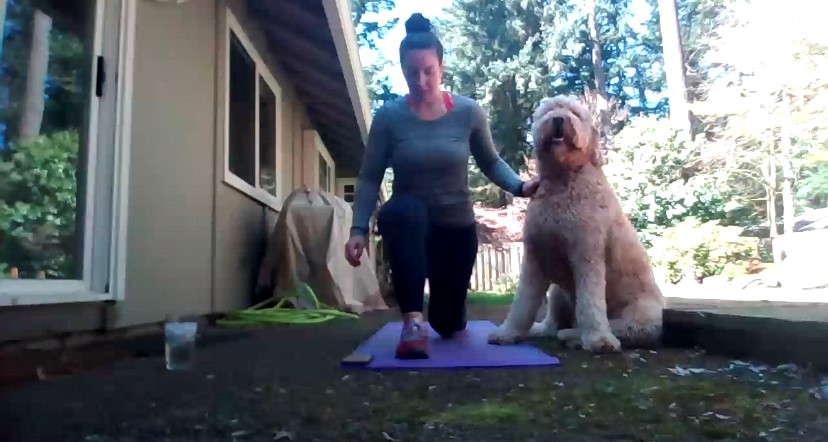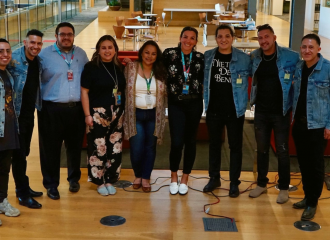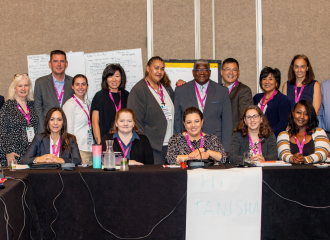It might be on a small screen, but you can practically feel the sweat pouring through the computer monitor as the Port of Portland’s wellness program coordinator, Courtney Rust, leads her coworkers in a virtual lunchtime cross-training session. A few colleagues leave their cameras on and mimic Rust’s movements, with dogs and children popping in and out to check on the action. Others are a little more private – speeding through the workout with their cameras off.

Even during a pandemic, Rust has found creative ways to bring employees together to focus on their health and well-being. Her colleagues aren’t surprised. Ever since she joined the Port five years ago, it’s been Rust’s mission to grow and evolve our Wellness Program.
It’s that commitment to constantly adapt that saw the Port of Portland named by the Portland Business Journal as Oregon’s Healthiest Employer (500-1499) for the second year in a row.
In their recognition, PBJ noted our Wellness Program’s variety: “It has expanded beyond simple fitness challenges and screenings to include cooking demonstrations, daily fitness classes and lectures from employees who have healthy hobbies, like bird watching. The program also offers life-skills help with things such as budgeting and preparing for retirement.”
While she certainly didn’t see a pandemic on the horizon, Rust was ready for the challenge. She quickly pivoted to offering more virtual fitness classes and webinars from experts. The remote work environment also spotlighted specific areas of the Wellness Program that needed more attention.

“We are continuously evolving the Port’s Wellness Program to meet the needs of employees and bring new holistic offerings and opportunities. A few of our focuses this past year have been incorporating more mental health topics and trainings and increasing the accessibility of our program to all employees,” said Rust. “The COVID-19 pandemic spotlighted how important these two initiatives are,” said Rust.
Roughly 1 in 5 adults deal with a mental health illness every year. It was no surprise to see an increased demand for resources around the topic. With a pandemic, civil rights movement and wildfire hitting employees all at once in 2020, employee mental health became even more relevant. Still, it’s not always a simple issue for organizations to address.
“Mental health is a tough subject to encourage employees to participate in because it is very personal and can carry a societal stigma. By posting resources and having trainings and wellness seminars, we are working to ease back some of the stigma and create a safe, open, supportive environment,” said Rust.
While the shift to virtual felt seamless in some ways, Rust and her colleagues still faced many challenges — the first being the removal of spontaneous conversations about wellness that came when most employees were working at the same physical location.
“Being physically apart is much more challenging to sustain a culture of wellness. In the gym, kitchen or throughout the office, I often participate in or witness organic conversations about health, nutrition and wellness. Being physically apart, these conversations have become less frequent. I know I find myself being much more deliberate about checking in with others. It’s important to try and reach out and connect even if it may require more effort during this time.”
For Port colleagues who taught in-person fitness classes, leading online sessions also takes a little more work. “I have a new respect for fitness instructors that lead online videos or digital classes. It is HARD to workout, talk, teach and demo all at the same time,” said Rust.

Still, despite the extra work it took to adapt the Wellness Program this year, Rust believes it is more important than ever for organizations to invest in wellness.
“We all want to be happy, healthy and safe, and I think it means a lot to individuals to see their employer making that a priority and providing additional education, access and resources. Especially now, it’s important to know we are not alone.”





